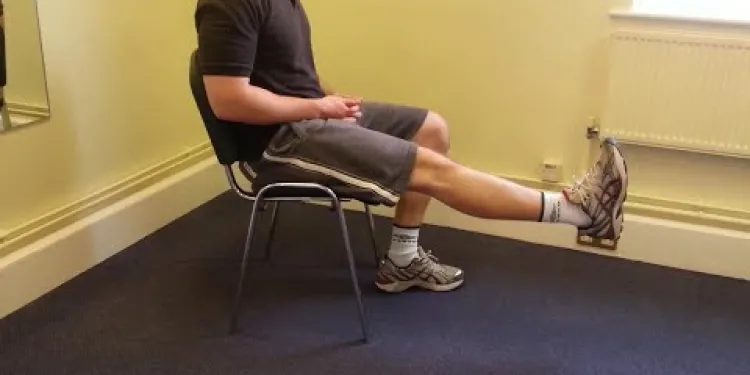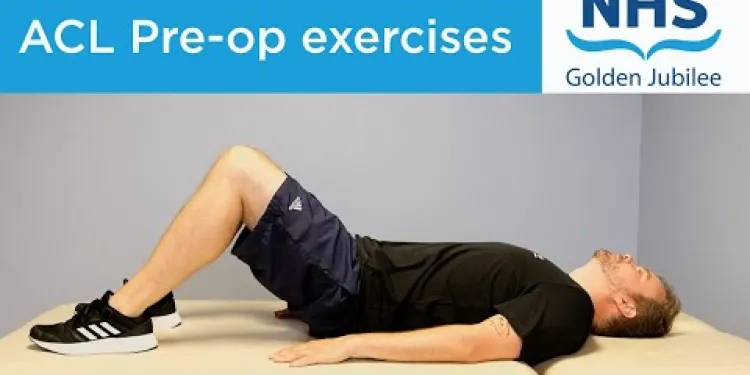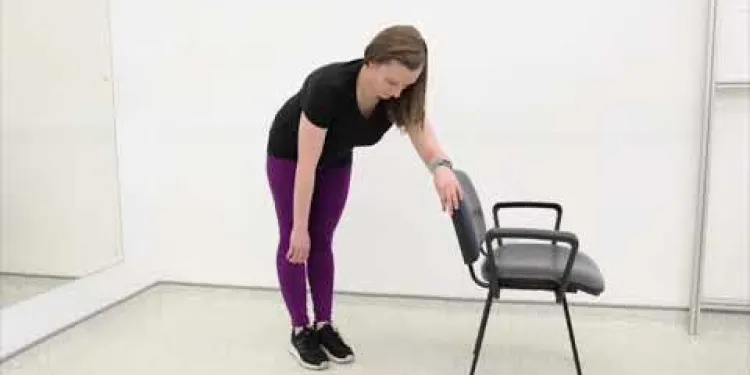Find Help
More Items From Ergsy search
-

Neck Care Exercises
Relevance: 100%
-

Neck Exercises
Relevance: 81%
-

Neck Exercises
Relevance: 81%
-

Advice on neck pain and whiplash
Relevance: 51%
-

Knee Care Exercises
Relevance: 49%
-

Head and Neck Cancer Diagnosis
Relevance: 45%
-

Can exercise worsen whiplash symptoms?
Relevance: 45%
-

Is it safe to exercise with a cold?
Relevance: 44%
-

Radiotherapy to the Head and Neck: A Guide for patients and their carers
Relevance: 41%
-

Royal Berkshire NHS Foundation Trust: Radiotherapy for head and neck cancers
Relevance: 39%
-

Facial exercise programme
Relevance: 37%
-

Chiropractic Care on the NHS
Relevance: 34%
-

Exercise in patients with a neuropathy
Relevance: 32%
-

Shoulder Exercises 1
Relevance: 31%
-

Plantar Fascia Loading Exercise (High Load Exercise)
Relevance: 30%
-

Dementia Care at Colten Care
Relevance: 30%
-

What is the best way to recover from whiplash?
Relevance: 30%
-

ACL pre-operation exercises
Relevance: 29%
-

Frozen shoulder Pendular Exercises
Relevance: 29%
-

Does physical exercise help people with CFS?
Relevance: 29%
-

Joint School - Knee Exercises
Relevance: 29%
-

ACL exercises post-operation
Relevance: 29%
-

Self care for your feet - Podiatrist
Relevance: 28%
-

Do care homes provide medical care?
Relevance: 28%
-

Joint School - Hip Exercises
Relevance: 28%
-

Is it safe to exercise outside during a heatwave?
Relevance: 28%
-

Will I be able to engage in physical exercise?
Relevance: 28%
-

Can I do abdominal exercises during pregnancy?
Relevance: 28%
-

Can I do high-impact exercises while pregnant?
Relevance: 28%
-

Elbow Eccentric Strengthening Exercise
Relevance: 28%
-

The role of care homes dedicated to caring for people living with dementia and memory loss
Relevance: 27%
-

Exercise Routines for Busy Parents
Relevance: 27%
-

Are activities provided for residents in care homes?
Relevance: 27%
-

What are the treatment options for whiplash?
Relevance: 27%
-

How is the quality of care regulated in care homes?
Relevance: 27%
-

How often should I exercise during pregnancy?
Relevance: 27%
-

What services do care homes provide?
Relevance: 27%
-

Can I take exercise classes during pregnancy?
Relevance: 27%
-

Can exercises help with labor preparation?
Relevance: 26%
-

Are there any exercises involved in air physiotherapy?
Relevance: 26%
Neck Care Exercises
Neck pain is a common issue in the United Kingdom, affecting many due to poor posture, prolonged screen time, and stress. Regular neck care exercises can alleviate discomfort and improve flexibility, helping to prevent future pain. Below are some targeted exercises to keep your neck healthy.
Importance of Stretching
Stretching is crucial for maintaining neck mobility and reducing stiffness. Gentle stretches can relieve tension and enhance blood flow to the muscles. A few simple stretches include:
- Neck Tilt: Slowly tilt your head to one side, bringing your ear towards your shoulder. Hold for 5-10 seconds and repeat on the other side.
- Neck Turn: Turn your head slowly to look over one shoulder, then the other. Hold each position for 5-10 seconds.
- Chin Tuck: Tuck your chin towards your chest, feeling a stretch along the back of your neck. Hold for 5-10 seconds.
Strengthening Exercises
Strengthening the neck muscles not only supports the head but also prevents injury. Incorporate these exercises into your routine:
- Isometric Neck Exercise: Press your palm against your forehead while resisting with your head. Hold for 5-10 seconds. Repeat by pressing against the sides and back of your head.
- Shoulder Blade Squeeze: Sit or stand with your back straight. Squeeze your shoulder blades together and hold for 5-10 seconds. This exercise strengthens the upper back and neck muscles.
Maintaining Good Posture
Good posture is essential for neck health. When sitting or standing, ensure your head is aligned with your spine, shoulders are relaxed, and your back is straight. Here are a few tips:
- Screen Position: Keep computer screens at eye level to avoid straining the neck.
- Phone Usage: Hold your phone at eye level rather than looking down, which can cause tension.
- Ergonomic Chairs: Use chairs that support your lower back and encourage an upright posture.
Regular Breaks and Movements
Prolonged periods of inactivity can lead to neck stiffness. Regular breaks and movements are essential:
- Frequent Breaks: Take short breaks every 30 minutes to stand, stretch, or walk around.
- Desk Exercises: Perform simple stretches and movements at your desk to keep the neck mobile.
Conclusion
Implementing these neck care exercises and habits can significantly reduce the risk of neck pain and enhance overall well-being. Always consult with a healthcare professional before starting any new exercise routine, especially if you have preexisting conditions. Taking proactive steps now will lead to better neck health in the long run.
Neck Care Exercises
Many people in the United Kingdom have neck pain. This can happen from a bad posture, too much screen time, or stress. Doing exercises for your neck can help stop the pain and let you move better. Here are some easy exercises to keep your neck healthy.
Why Stretching Helps
Stretching is important to keep your neck moving and stop it from getting stiff. It can also help your muscles feel better. Here are some easy stretches you can try:
- Neck Tilt: Slowly bend your head to one side like you are trying to touch your shoulder with your ear. Hold it for 5 to 10 seconds, then do the same on the other side.
- Neck Turn: Turn your head slowly to look over one shoulder, then the other. Hold it for 5 to 10 seconds each time.
- Chin Tuck: Move your chin down towards your chest. You should feel a stretch at the back of your neck. Hold it for 5 to 10 seconds.
Making Neck Muscles Stronger
Strong neck muscles help your head and stop injuries. Try these exercises:
- Isometric Neck Exercise: Press your palm on your forehead and push against it with your head. Hold it for 5 to 10 seconds. Do the same by pressing against the sides and back of your head.
- Shoulder Blade Squeeze: Sit or stand with your back straight. Squeeze your shoulder blades together and hold for 5 to 10 seconds. This makes your neck and back muscles stronger.
Good Posture Matters
Good posture keeps your neck healthy. Make sure your head is straight with your spine, relax your shoulders, and keep your back straight. Here are some tips:
- Screen Position: Keep your computer screen at eye level to stop neck strain.
- Phone Usage: Hold your phone at eye level instead of looking down to avoid tension.
- Ergonomic Chairs: Use chairs that support your lower back and help you sit up straight.
Take Breaks and Move Around
Sitting or staying too still for a long time can make your neck stiff. Take breaks and move to stay healthy:
- Frequent Breaks: Take short breaks every 30 minutes to stand up, stretch, or walk around.
- Desk Exercises: Do simple stretches and movements at your desk to keep your neck flexible.
Conclusion
These exercises and tips can help stop neck pain and make you feel better. If you are not sure about starting these exercises, talk to a healthcare professional. Doing these things now will help your neck stay healthy for a long time.
Frequently Asked Questions
What are the benefits of neck care exercises?
Neck care exercises help to reduce neck pain, improve flexibility, increase strength, and enhance posture. They can also aid in the prevention of future neck problems by maintaining healthy movement and reducing muscle tension.
How often should I perform neck care exercises?
For optimal benefits, it's recommended to perform neck care exercises daily or at least several times a week. Consulting with a healthcare professional can provide you with tailored advice based on your specific condition.
Are neck care exercises suitable for everyone?
Most neck care exercises can be performed safely by a wide range of people. However, if you have a specific medical condition or are experiencing severe neck pain, it is advisable to consult a healthcare professional before starting any new exercise regimen.
Can neck care exercises help with chronic neck pain?
Yes, regular neck care exercises can be helpful in managing chronic neck pain. They improve mobility, reduce tension, and strengthen the muscles supporting the neck, which can contribute to long-term pain relief.
What is a simple neck stretch I can do at home?
A simple neck stretch involves tilting your head to one side while keeping your shoulders relaxed. Hold the stretch for 15-30 seconds, then repeat on the other side. This can help to release muscle tension and improve flexibility.
Are there any precautions I need to take while doing neck exercises?
Ensure you perform exercises slowly and gently, without sudden movements or overstretching. If you feel pain or discomfort, stop the exercise immediately. It’s also important to maintain good posture and use proper form to avoid injury.
Can neck care exercises improve my posture?
Yes, neck care exercises can improve posture by strengthening the muscles that support the neck and upper back. Good posture helps to evenly distribute weight and reduce the strain on your neck and spine.
What equipment do I need for neck care exercises?
Most neck care exercises can be performed without any special equipment. However, items such as a small towel, a chair, or a resistance band can be useful for some exercises to provide support and added resistance.
How long should each neck exercise session last?
A neck exercise session typically lasts between 10 to 15 minutes, but it can be adjusted based on your comfort level and specific needs. Consistency is key, so even a short session performed regularly can be beneficial.
Are there any specific exercises for a stiff neck?
Yes, exercises such as gentle rotations, tilts, and shoulder shrugs can help to alleviate stiffness. Applying a warm compress before exercises can also help in loosening stiff muscles.
Can neck exercises alleviate headaches?
Neck exercises can help reduce headaches, particularly those related to muscle tension and poor posture. By improving neck mobility and reducing tension, these exercises can alleviate some of the common triggers of headaches.
What should I do if I experience pain during neck exercises?
If you experience pain during neck exercises, it's important to stop immediately. Rest and try a gentler version of the exercise later. Persistent pain should be evaluated by a healthcare professional to rule out any serious issues.
Can I perform neck exercises at my desk?
Yes, there are several neck exercises that can be done while sitting at your desk. Simple stretches, such as neck tilts and rotations, can be easily incorporated into your workday to relieve tension and improve posture.
Are there neck exercises that can help with cervical spondylosis?
Yes, gentle range-of-motion exercises and specific strengthening exercises can help manage cervical spondylosis. However, it's crucial to get a tailored plan from a healthcare professional to ensure exercises are safe and effective for your condition.
Is it important to warm up before doing neck exercises?
Yes, a gentle warm-up, such as a few minutes of light activity or applying a warm compress, can help prepare your neck muscles for exercise and reduce the risk of injury.
Why is it good to do exercises for your neck?
Doing exercises for your neck can help you feel better. It can make your neck stronger. It can stop your neck from hurting. It can help you move your neck more easily.
Here are some things that can help you do neck exercises:
- Ask a friend to help you if you find it hard.
- Use pictures or videos to see how to do the exercises.
- Go slow and be gentle with your neck.
- Take breaks if you feel tired.
Neck exercises can help your neck feel better. They make your neck stronger and let it move more easily. These exercises can also help stop neck pain from coming back.
How often should I do neck exercises?
It's good to do neck exercises every day, or a few times a week. To get the best advice for you, talk to a doctor or healthcare worker. They can help you with what you need.
Can everyone do neck exercises?
Most neck exercises are safe for many people. But if you have a health problem or your neck hurts a lot, talk to a doctor before trying new exercises.
Do neck exercises help with long-lasting neck pain?
Doing neck exercises can help if your neck hurts a lot. These exercises can help you move better, feel less tight, and make your neck muscles stronger. This can help your neck feel better for a long time.
How can I stretch my neck at home?
To stretch your neck, follow these easy steps:
1. Sit or stand up straight.
2. Keep your shoulders relaxed and still.
3. Gently tilt your head to one side.
4. Hold it there for 15 to 30 seconds.
5. Now do the same on the other side.
This stretch can help your neck feel better and move more easily.
If you need help, ask someone to show you or try watching a video for guidance.
What should I be careful about when doing neck exercises?
Here are some tips to help you:
- Start slowly and do gentle movements.
- Stop if you feel pain. It’s important to listen to your body.
- Ask a helper or a trainer to show you how to do it right.
- Use a mirror to watch your moves.
- Take breaks to rest your neck.
Remember, if you are unsure, ask a doctor or a physiotherapist for advice.
Do exercises slowly and gently. Do not move too quickly or stretch too much. If you feel pain, stop right away. Stand up straight and use the right way to do exercises so you do not get hurt.
Can exercises help my neck and make me stand up straight?
Yes, doing exercises for your neck can help you stand or sit up straight. These exercises make the muscles in your neck and upper back stronger. Good posture means you carry your weight evenly, so there is less stress on your neck and back.
What things do I need to take care of my neck?
You can do most neck exercises without any special things. But a small towel, a chair, or a stretchy band can help. They give good support and make the exercises a bit harder, which is good for building strength.
How long should you do neck exercises each time?
When you exercise your neck, it's good to know how long to do it. Here are some tips:
- Try to do neck exercises for about 5 to 10 minutes.
- If you feel tired or sore, it's okay to stop and rest.
- Use a timer to help you keep track of the time.
Doing a little each day can help keep your neck strong and healthy!
Neck exercises usually take about 10 to 15 minutes. You can make them longer or shorter if that feels better for you. It's important to do them often. Doing a little bit often can really help.
What can I do if my neck feels stiff?
Here are some easy exercises to help if your neck feels stiff:
- Nod your head: Slowly look up and down, like saying "yes."
- Side to side: Turn your head gently left and right, like saying "no."
- Ear to shoulder: Tilt your head so your ear moves towards your shoulder. Do this on both sides.
Remember to move slowly and stop if it hurts. You can ask an adult for help or use a video to follow along.
Yes, doing simple exercises can help if your neck feels stiff. You can gently turn your head, tilt it to the side, and shrug your shoulders up and down. This can make your neck feel better. Putting something warm, like a warm towel, on your neck before you start can also help your muscles feel less tight.
Can doing exercises for your neck help with headaches?
Doing neck exercises can help stop headaches. These exercises are good if your neck muscles are tight or if you sit in a bad way. The exercises help your neck move better and feel less tight. This can make headaches go away.
What to Do if My Neck Hurts During Exercises?
If your neck hurts when you exercise, stop and rest. Here are some things you can try to feel better:
- Take a break: Rest for a little while.
- Try gentle stretches: Move your neck slowly side to side.
- Use a warm cloth: Put a warm cloth on your neck.
- Ask for help: Talk to a grown-up or see a doctor.
Remember, it’s okay to ask for help. We want you to feel good and safe.
If you feel pain while doing neck exercises, stop right away. Take a break and try an easier version of the exercise later. If the pain keeps coming back, talk to a doctor to make sure nothing is wrong.
Can I do neck exercises while sitting at my desk?
Yes, you can do neck exercises while sitting at your desk. You can try easy stretches like moving your head up and down or side to side. These stretches help you feel better and sit up straight.
Can neck exercises help with a sore neck?
Do you have a sore neck? Sometimes it's called "cervical spondylosis." Doing some simple neck exercises can help.
Try these tips to feel better:
- Gently move your head side to side.
- Look up and down slowly.
- Turn your head left and right, like saying "no."
- Make small circles with your nose, like drawing in the air.
- Stop if it hurts.
Ask a grown-up or a friend to help, if you need it.
A doctor or therapist can show you what to do.
Yes, gentle exercises that move your neck and make it stronger can help with neck problems. But it's important to talk to a doctor to get the right exercises that are safe and help you feel better.
Do I need to warm up before I exercise my neck?
Yes, doing a gentle warm-up is a good idea. You can do some light exercises for a few minutes or use a warm cloth on your neck. This helps get your neck ready for exercise and stops you from getting hurt.
Useful Links
- Ergsy carfully checks the information in the videos we provide here.
- Videos shown by Youtube after a video has completed, have NOT been reviewed by ERGSY.
- To view, click the arrow in centre of video.
- Most of the videos you find here will have subtitles and/or closed captions available.
- You may need to turn these on, and choose your preferred language.
- Go to the video you'd like to watch.
- If closed captions (CC) are available, settings will be visible on the bottom right of the video player.
- To turn on Captions, click settings .
- To turn off Captions, click settings again.
More Items From Ergsy search
-

Neck Care Exercises
Relevance: 100%
-

Neck Exercises
Relevance: 81%
-

Neck Exercises
Relevance: 81%
-

Advice on neck pain and whiplash
Relevance: 51%
-

Knee Care Exercises
Relevance: 49%
-

Head and Neck Cancer Diagnosis
Relevance: 45%
-

Can exercise worsen whiplash symptoms?
Relevance: 45%
-

Is it safe to exercise with a cold?
Relevance: 44%
-

Radiotherapy to the Head and Neck: A Guide for patients and their carers
Relevance: 41%
-

Royal Berkshire NHS Foundation Trust: Radiotherapy for head and neck cancers
Relevance: 39%
-

Facial exercise programme
Relevance: 37%
-

Chiropractic Care on the NHS
Relevance: 34%
-

Exercise in patients with a neuropathy
Relevance: 32%
-

Shoulder Exercises 1
Relevance: 31%
-

Plantar Fascia Loading Exercise (High Load Exercise)
Relevance: 30%
-

Dementia Care at Colten Care
Relevance: 30%
-

What is the best way to recover from whiplash?
Relevance: 30%
-

ACL pre-operation exercises
Relevance: 29%
-

Frozen shoulder Pendular Exercises
Relevance: 29%
-

Does physical exercise help people with CFS?
Relevance: 29%
-

Joint School - Knee Exercises
Relevance: 29%
-

ACL exercises post-operation
Relevance: 29%
-

Self care for your feet - Podiatrist
Relevance: 28%
-

Do care homes provide medical care?
Relevance: 28%
-

Joint School - Hip Exercises
Relevance: 28%
-

Is it safe to exercise outside during a heatwave?
Relevance: 28%
-

Will I be able to engage in physical exercise?
Relevance: 28%
-

Can I do abdominal exercises during pregnancy?
Relevance: 28%
-

Can I do high-impact exercises while pregnant?
Relevance: 28%
-

Elbow Eccentric Strengthening Exercise
Relevance: 28%
-

The role of care homes dedicated to caring for people living with dementia and memory loss
Relevance: 27%
-

Exercise Routines for Busy Parents
Relevance: 27%
-

Are activities provided for residents in care homes?
Relevance: 27%
-

What are the treatment options for whiplash?
Relevance: 27%
-

How is the quality of care regulated in care homes?
Relevance: 27%
-

How often should I exercise during pregnancy?
Relevance: 27%
-

What services do care homes provide?
Relevance: 27%
-

Can I take exercise classes during pregnancy?
Relevance: 27%
-

Can exercises help with labor preparation?
Relevance: 26%
-

Are there any exercises involved in air physiotherapy?
Relevance: 26%


